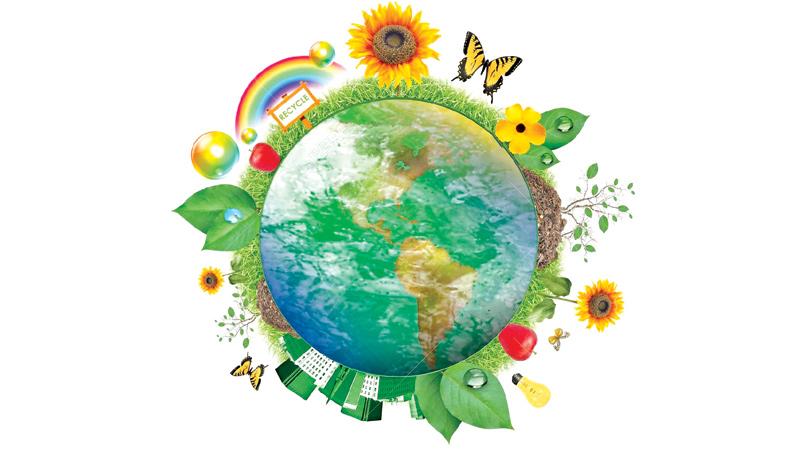
The earth is surrounded by a layer of gases called the atmosphere. The atmosphere is very important to life on Earth and does many things to help protect life and help life to survive.
Air

 The atmosphere is the air that plants and animals breathe to survive. The atmosphere is made up of mostly nitrogen (78%) and oxygen (21%). There are lots of other gases that are part of the atmosphere, but in much smaller amounts. These include argon, carbon dioxide, neon, helium, hydrogen, and more. Oxygen is needed by animals to breathe and carbon dioxide is used by plant in photosynthesis.
The atmosphere is the air that plants and animals breathe to survive. The atmosphere is made up of mostly nitrogen (78%) and oxygen (21%). There are lots of other gases that are part of the atmosphere, but in much smaller amounts. These include argon, carbon dioxide, neon, helium, hydrogen, and more. Oxygen is needed by animals to breathe and carbon dioxide is used by plant in photosynthesis.
A Big Blanket
The atmosphere protects Earth like a big blanket of insulation. It absorbs the heat from the Sun and keeps the heat inside the atmosphere helping the Earth to stay warm, called the Greenhouse Effect.
It also keeps the overall temperature of the Earth fairly steady, especially between night and day. So we don't get too cold at night and too hot during the day.
There is also a portion of the atmosphere called the ozone layer. The ozone layer helps to protect the earth from the Sun's radiation.
This big blanket also helps to form our weather patterns and climate. The weather keeps too much hot air from forming in one place and causes storms and rainfall. All these things are important to life and the Earth's ecology.

Layers of Earth's Atmosphere
The Earth's atmosphere is divided up into 5 major layers:
Exosphere - The last layer and the thinnest. It goes all the way to 10,000 km above the Earth's surface.
Thermosphere - The thermosphere is next and the air is very thin here. Temperatures can get extremely hot in the thermosphere.
Mesosphere - The mesosphere covers the next 50 miles beyond the stratosphere. This is where most meteors burn up upon entry. The coldest place on Earth is at the top of the mesosphere.
Stratosphere - The stratosphere extends for the next 32 miles after the troposphere. Unlike the troposphere the stratosphere gets its heat by the Ozone Layer absorbing radiation from the sun. As a result, it gets warmer the further away you get from the Earth. Weather balloons go as high as the stratosphere.
Troposphere - The troposphere is the layer next to the ground or surface of the Earth. It covers around 30,000-50,000 feet high. This is where we live and even where planes fly. Around 80% of the mass of the atmosphere is in the troposphere. The troposphere is heated by the surface of the Earth.
Where does Outer Space start?
There is no clear definition between the Earth's atmosphere and outer space. There are a few official guidelines, most are between 50 and 80 miles from the surface of the Earth.
(Ducksters)
